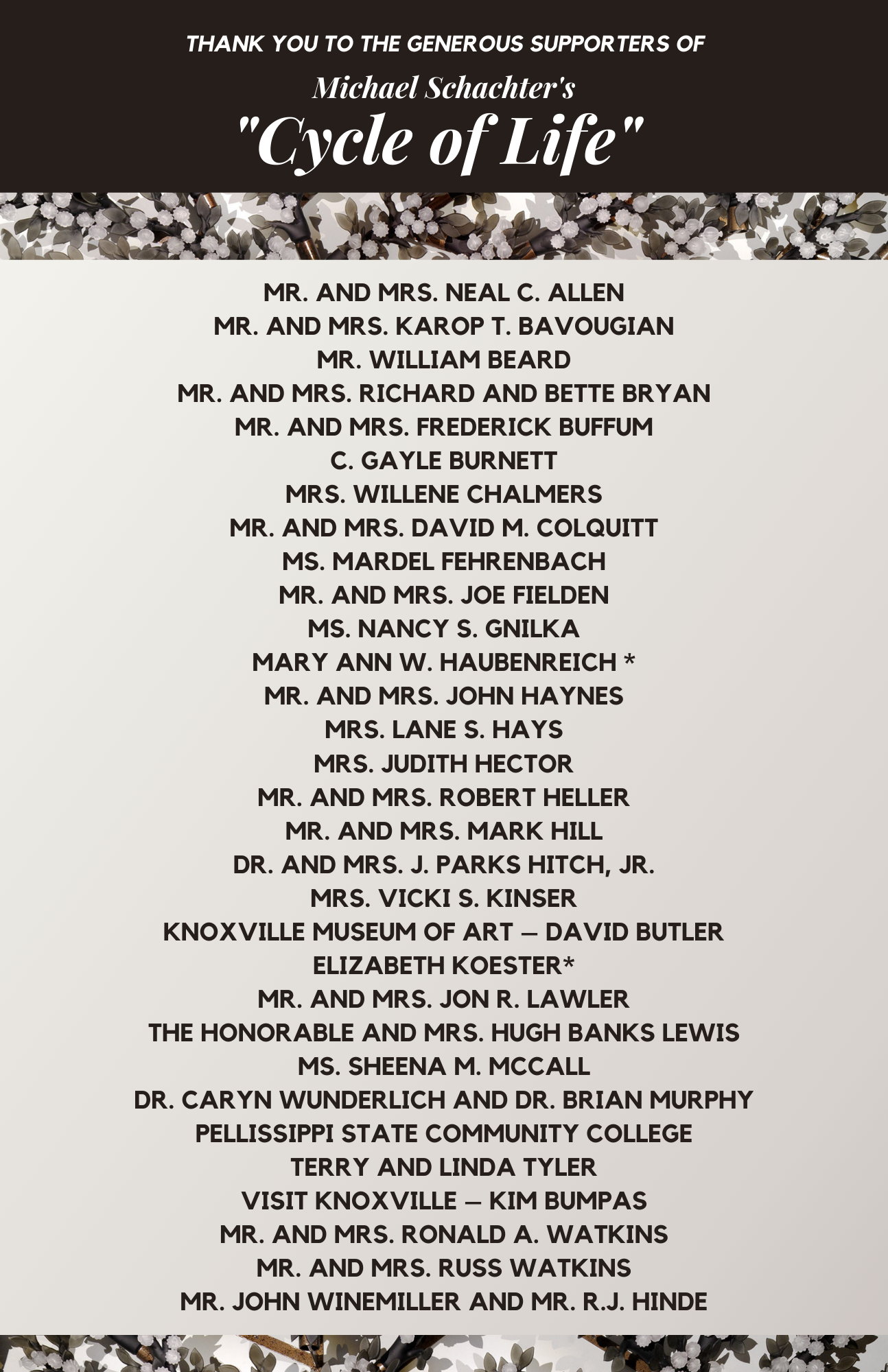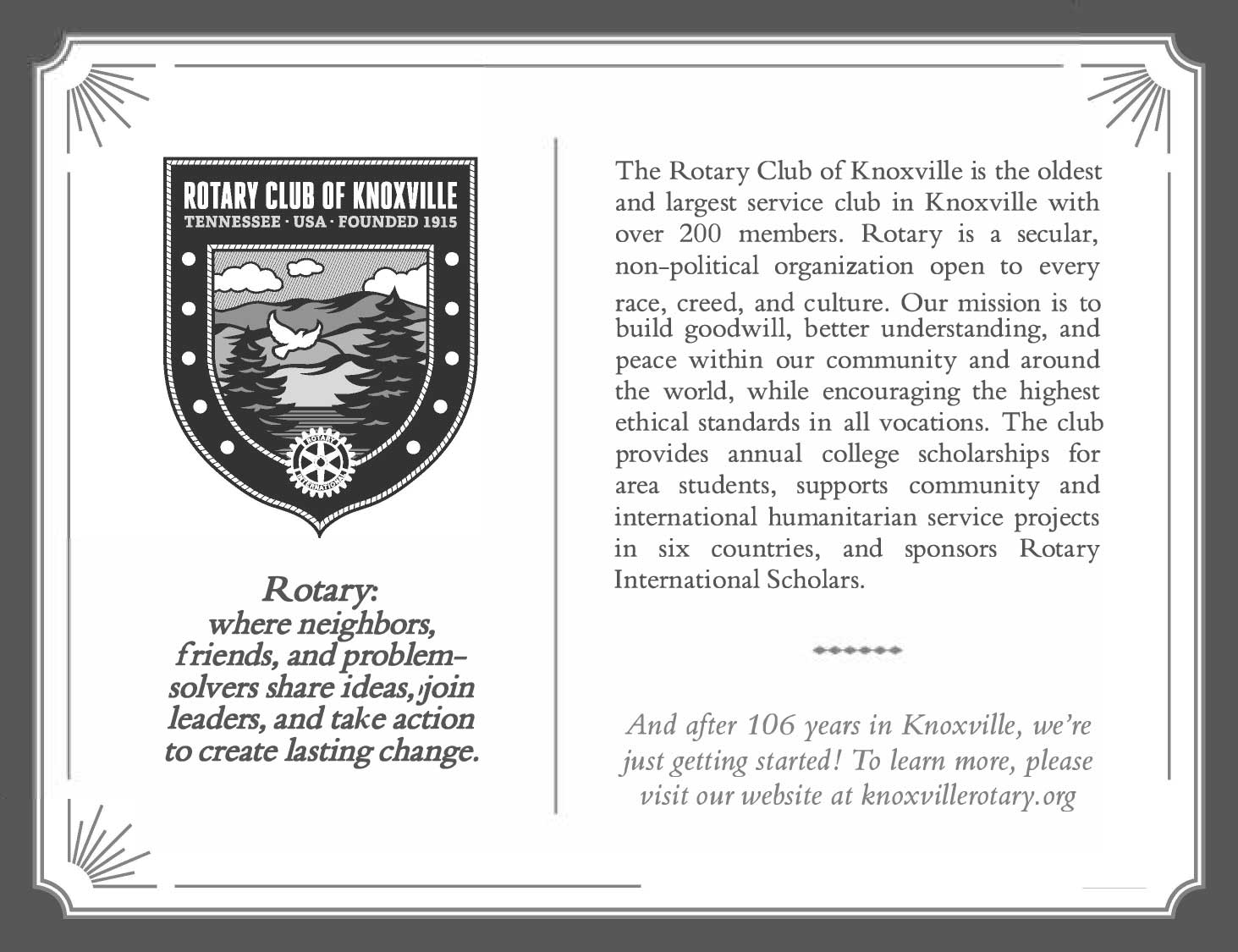
The Cycle of Life
Apr. 21-22
Cycle of Life Supporters
Thank you to the generous supporters of
Michael Schachter's "Cycle of Life"
Mr. and Mrs. Neal C. Allen
Mr. and Mrs. Karop T. Bavougian
Mr. William Beard
Mr. and Mrs. Richard and Bette Bryan
Mr. and Mrs. Frederick Buffum
C. Gayle Burnett
Mrs. Willene Chalmers
Mr. and Mrs. David M. Colquitt
Ms. Mardel Fehrenbach
Mr. and Mrs. Joe Fielden
Ms. Nancy S. GnilkaMary Ann W. Haubenreich *
Mr. and Mrs. John Haynes
Mrs. Lane S. Hays
Mrs. Judith Hector
Mr. and Mrs. Robert Heller
Mr. and Mrs. Mark Hill
Dr. and Mrs. J. Parks Hitch, Jr.
Mrs. Vicki S. Kinser
Knoxville Museum of Art – David Butler
Elizabeth Koester*
Mr. and Mrs. Jon R. Lawler
The Honorable and Mrs. Hugh Banks Lewis
Ms. Sheena M. McCall
Dr. Caryn Wunderlich and Dr. Brian Murphy
Pellissippi State Community College
Terry and Linda Tyler
Visit Knoxville – Kim Bumpas
Mr. and Mrs. Ronald A. Watkins
Mr. and Mrs. Russ Watkins
Mr. John Winemiller and Mr. R.J. Hinde
Mr. and Mrs. Karop T. Bavougian
Mr. William Beard
Mr. and Mrs. Richard and Bette Bryan
Mr. and Mrs. Frederick Buffum
C. Gayle Burnett
Mrs. Willene Chalmers
Mr. and Mrs. David M. Colquitt
Ms. Mardel Fehrenbach
Mr. and Mrs. Joe Fielden
Ms. Nancy S. GnilkaMary Ann W. Haubenreich *
Mr. and Mrs. John Haynes
Mrs. Lane S. Hays
Mrs. Judith Hector
Mr. and Mrs. Robert Heller
Mr. and Mrs. Mark Hill
Dr. and Mrs. J. Parks Hitch, Jr.
Mrs. Vicki S. Kinser
Knoxville Museum of Art – David Butler
Elizabeth Koester*
Mr. and Mrs. Jon R. Lawler
The Honorable and Mrs. Hugh Banks Lewis
Ms. Sheena M. McCall
Dr. Caryn Wunderlich and Dr. Brian Murphy
Pellissippi State Community College
Terry and Linda Tyler
Visit Knoxville – Kim Bumpas
Mr. and Mrs. Ronald A. Watkins
Mr. and Mrs. Russ Watkins
Mr. John Winemiller and Mr. R.J. Hinde







